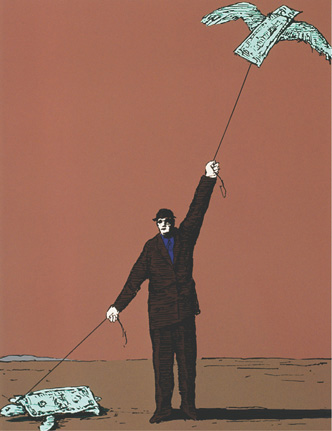Section 4 Monetary Policy and Macroeconomic Stabilization
Preview
Objectives
After studying this section you will be able to:
- Understand how monetary policy works.
- Explain the problems of timing and policy lags in implementing monetary policy.
- Explain how predictions about the length of a business cycle affect monetary policy.
- Describe two distinct approaches to monetary policy.
Section Focus
The Federal Reserve uses monetary policy to try to tame business cycles. The unpredictable length of business cycles, however, makes it difficult to determine when it is wise to intervene in the economy.
Key Terms
- monetarism
- easy money policy
- tight money policy
- inside lag
- outside lag
Adherents of monetarism believe that the money supply is the most important factor in macroeconomic performance. How, then, does monetary policy influence macroeconomic performance?
How Monetary Policy Works
Monetary policy alters the supply of money. The supply of money, in turn, affects interest rates. As you read earlier, interest rates affect the level of investment and spending in the economy.

Keeping the economy stable requires a delicate balancing act.
The Money Supply and Interest Rates
It is easy to see the cost of money if you are borrowing it. The cost—the price that you as borrower pay—is the interest rate. Even if you have your own money, however, the interest rate still affects you. The interest rate is also the cost of having money, because you are giving up interest by not saving or investing. Thus, the interest rate is always the cost of money.
The market for money is like any other market. If the supply is higher, the price—the interest rate—is lower. If the supply is lower, the price—the interest rate—is higher. In other words, when the money supply is low, interest rates are high. When the money supply is high, interest rates are low.
Interest Rates and Spending
Recall from Chapter 12 that interest rates are important factors of spending in the economy. Lower interest rates encourage greater investment spending by business firms. This is because a firm's cost of borrowing—or of using its own funds—decreases as the interest rate decreases.




